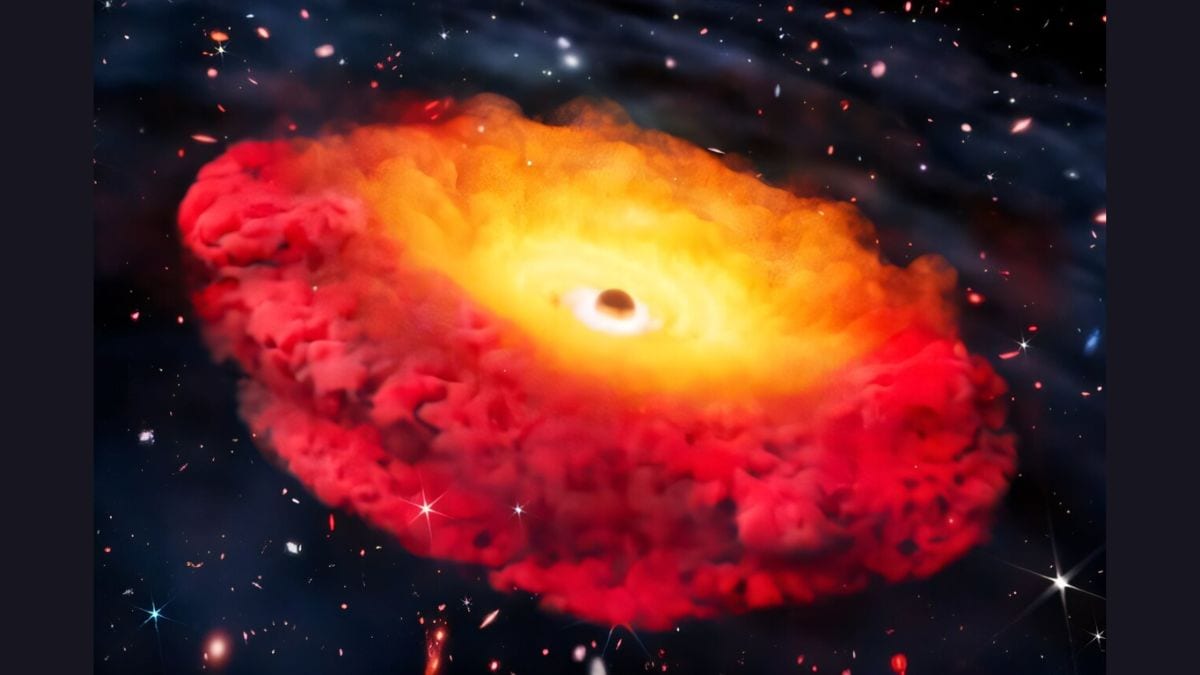
Astronomers have found essentially the most distant black gap but, an historic quasar greater than 13 billion mild years from our personal Earth, extremely near the restrict of the place scientists even count on supermassive black holes to kind. The cosmic behemoth of a galaxy, referred to as CAPERS-LRD-z9, offers a wide-window echo again in time to one of many furthest peeks into our early universe but, solely shortly after the Large Bang, when our cosmos was a fraction (3%) of its present age. Now, researchers led by these in The College of Texas at Austin’s Cosmic Frontier workforce have discovered what are seemingly very highly effective gasoline outflows and likewise proof that a few of the very first black holes had been born a lot, a lot heavier than beforehand believed.
Early Black Gap Present in ‘Little Pink Dot’ Galaxy Challenges Development Fashions
In keeping with a study revealed in The Astrophysical Journal this week, researchers led by these at The College of Texas at Austin’s Cosmic Frontier workforce are saying they’ve made essentially the most delicate measurements to date lower than a billion years after the Large Bang, and these neonatal black holes had been producing gasoline outflows quick sufficient — and over a protracted sufficient interval — to halt stars forming in surrounding galaxies.
Extra just lately found, the Little Pink Dots galaxy seems to be simply the type of ominous-sounding crimson that might shoot a vibrant deep purple because of intense radiation happening amongst large black holes and gasoline clouds.
Slightly galaxy of mass in all that greater than sufficient of much less, these a whole lot of tens of millions of suns amongst which all these stars are caught. This, in flip, birthed the supermassive galactic monsters — both shortly overcooked giants or untimely sizes.
JWST high-z key science theme & imaging science publicity for mapping the method of supermassive black gap formation, progress, and evolution at excessive spatial element.
